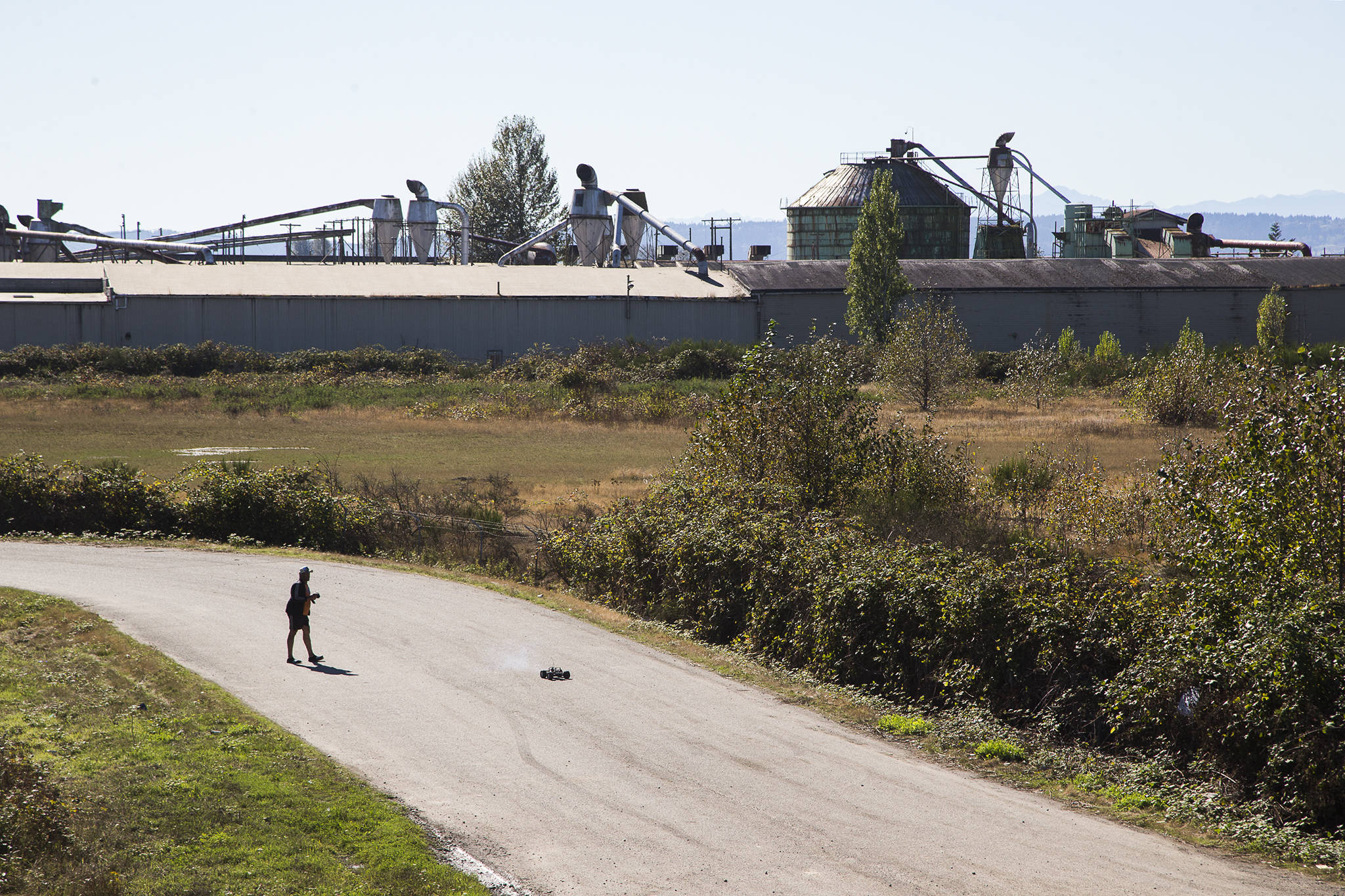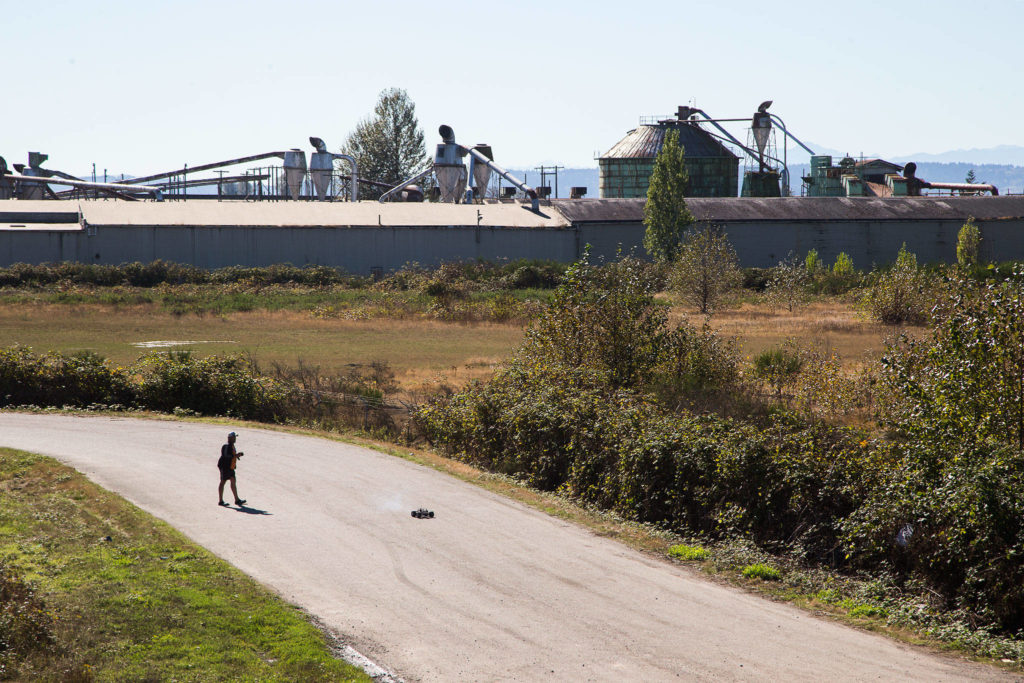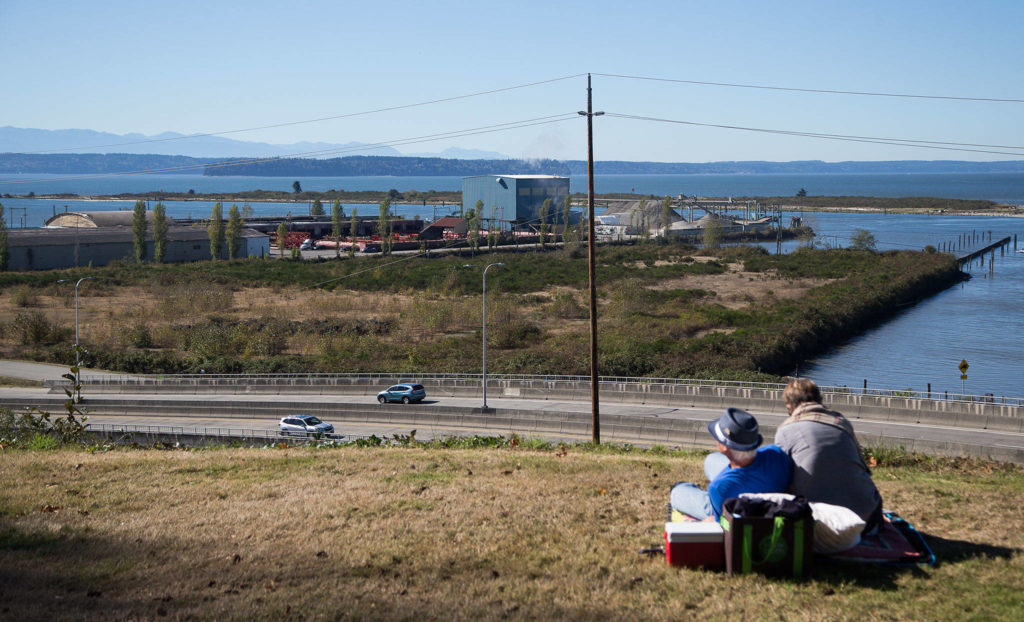EVERETT — A former mill site along Everett’s waterfront will find new life as a manufacturing job center after the Port of Everett removes contaminated soil and repairs the shoreline this fall and spring.
The Bay Wood property lies along the shore west of Legion Memorial Park, along the northern end of West Marine Drive near Maulsby Mudflats where the Snohomish River and Port Gardner meet.
The site shares a similar history with much of Everett’s waterfront — its former days as a sawmill left it rife with contamination.
Along the shoreline, wood and industrial debris are embedded in the sediment, smothering near-shore habitat and animals like clams. The debris causes changes in the water chemistry that can harm marine ecosystems.
Stormwater runoff from an adjacent property also polluted some upland soil. That discharge has since been cut off.
The port approved a $1.54 million contract with Strider Construction for cleanup work last month.
Starting in November, the contractor will restore about 1,600 feet of shoreline to remove material like old bulkheads, reshape the slope to a natural grade and plant the shoreline with native plants to restore salmon habitat. On the upper bank, the developer will remove invasive plants to create a 2,300-foot buffer zone of native species.
The developer will remove about 1,000 cubic yards of contaminated soil from the southern upland part of the property, disposing of some and repurposing the rest to raise the site elevation for future building.
The entire project will cost about $2.3 million, said Erik Gerking, who directs the port’s environmental programs.
This isn’t the first cleanup effort at the Bay Wood property.
In the mid-1990s, the port removed nearly 150,000 cubic yards of wood waste after the mill vacated the property. The port couldn’t find records from that project, but a 2002 Herald article said “officials spent some $500,000 to clean up the property.”
In 2008, the port and the state Department of Ecology spent $1.1 million more to perform a Remedial Investigation and Feasibility Study, to then excavate an additional 10,000 cubic yards of contaminated soil in 2012.
The port bought the site in 1929 with plans to connect it to the northern tip of Jetty island to create a freshwater harbor, Gerking said.
Through a 1996 settlement agreement with the port, Coast Pacific Trading, Inc. (a Washington corporation which took over Bay Wood Products, Inc.) paid $170,000 toward cleaning up the property, about 4% of the cleanup’s total cost so far.
Historically, the port shares the cost of cleaning up waterfront property 50/50 with the state ecology department. But at Bay Wood, the department is covering 90%.
That’s because the site sits so close to the mouth of the Snohomish River, which is historically significant for the Tulalip Tribes, said Gerking.
Ecology’s contributions to cleanup projects are funded through the Model Toxics Control Act — a tax on oil to fund cleanups of historical contamination in Washington.
But with gas usage down during the COVID-19 pandemic, Port CEO Lisa Lefeber said there’s potential that fund won’t have as much money in the future. She’s also concerned the fund could be used to backfill deficits in the state’s general fund budget, which happened in past recessions.
“As of right now, we haven’t seen the financial impact of that,” Lefeber said. “But I know that’s something we’re going to be looking at.”
The port’s portion of the cleanups is funded by revenue from operations and its taxing district, which brings in about $5 million per year. Tax revenue funds about 10% of cleanup projects, according to the port.
Work at the Bay Wood property should wrap up in March, Gerking said.
The port now owns about 3,300 acres of property, about 1,000 of which has been developed or is developable. Nearly all of it is similarly contaminated by former mill activity, Lefeber said. Another 200 acres underwater are also polluted.
Some soil has remnants of oils, grease and fuel products, Gerking said. Wood waste and industrial debris are scattered throughout the upland and in the water. There’s also some contamination associated with burning, likely from industrial sites catching fire.
Even before the sawmills came to Everett, the ASARCO smelter that processed oar from Monte Cristo left arsenic in the soil and groundwater.
After Bay Wood is complete, the port will have restored 250 of the upland acres it owns. That’s about 68% of the land that needs cleaning.
About 5% of the in-water contamination has been cleared, Gerking said.
A developer is scheduled to begin construction in March on a 235,000-square-foot job center for manufacturing companies. The port estimates the complex will create about 300 direct jobs and 1,000 indirect jobs. The construction will return the site to tax rolls, generating an estimated $330,000 per year in state and local taxes. The port does not pay property taxes on brownfield sites (properties that need cleanups), spokesperson Catherine Soper said.
As a part of the job center, the developer will build an accessible 8-foot-wide public nature trail along the shoreline with views of Port Gardner as it meets the Snohomish River. Construction should take 12 to 18 months, according to the port.
Julia-Grace Sanders: 425-339-3439; jgsanders@heraldnet.com; Twitter: @sanders_julia.
Talk to us
> Give us your news tips.
> Send us a letter to the editor.
> More Herald contact information.



























